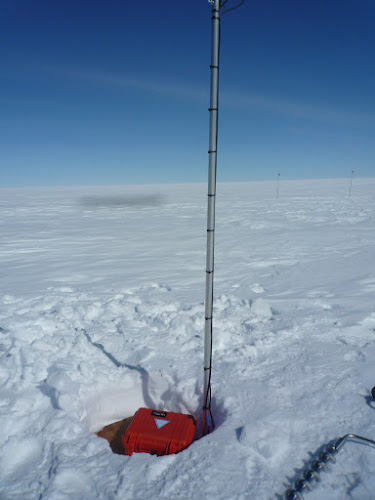After three weeks on the Roi Baudouin Ice Shelf Area we returned to the Princess Elisabeth Station with an about 9 h Skidoo Trip. Our time on the ice shelf has been very productive. We collected around 200 km of radar profiles, measured several stake arrays with phase-sensitive radars, collected our GPS station at Derwael Ice Rise, resupplied the tweeting ice-shelf with new batteries and left two radars in overwintering mode (i.e. measuring every hour). We had a lot of fruitful scientific overlap with the BENEMELT Team and we hope to present the first solid scientific findings soon. Maybe we are a bit over-excited at this instance, but the datat looks very good indeed!
Mostly good weather, and very good field support from Sanne, Guenther, Frank and Erik (all part of the Belgian Military) made a successfull trip. After one recovery day at the base (with showers, hooray!), we will be heading out again towards the Antarctic Plateau to have a look how the GPS on Yet Nunten is doing. Slowly but surely our departure from Antarctica appears on our horizon, currently we are supposed to leave next week thursday.







